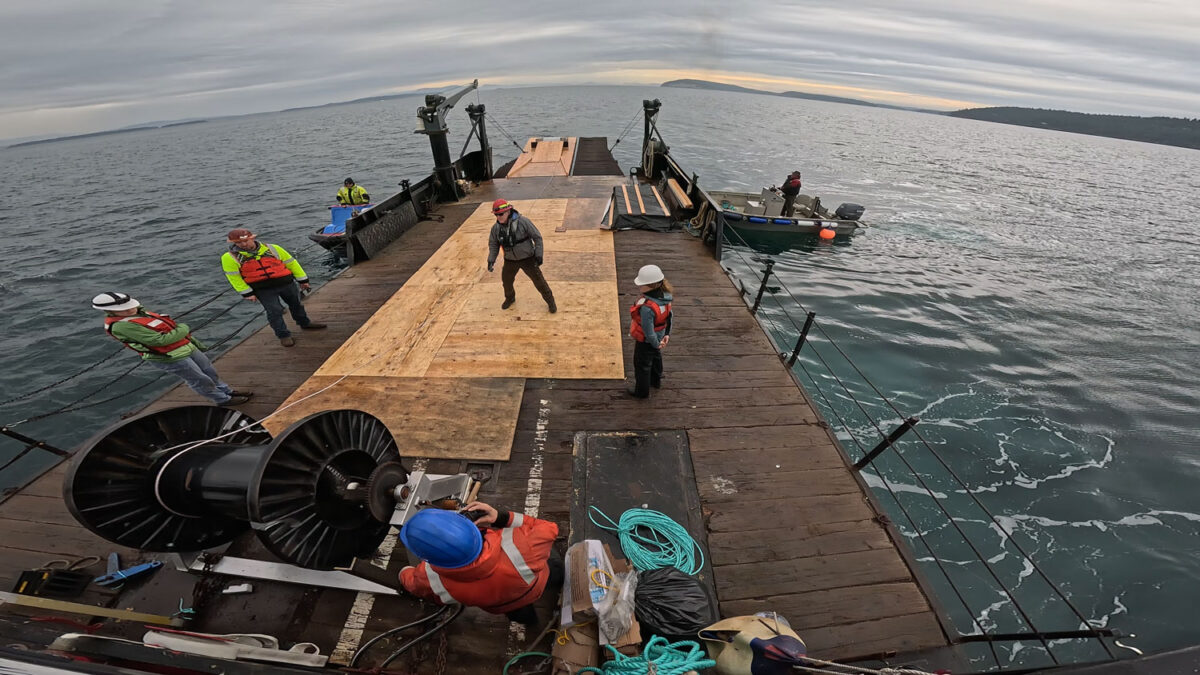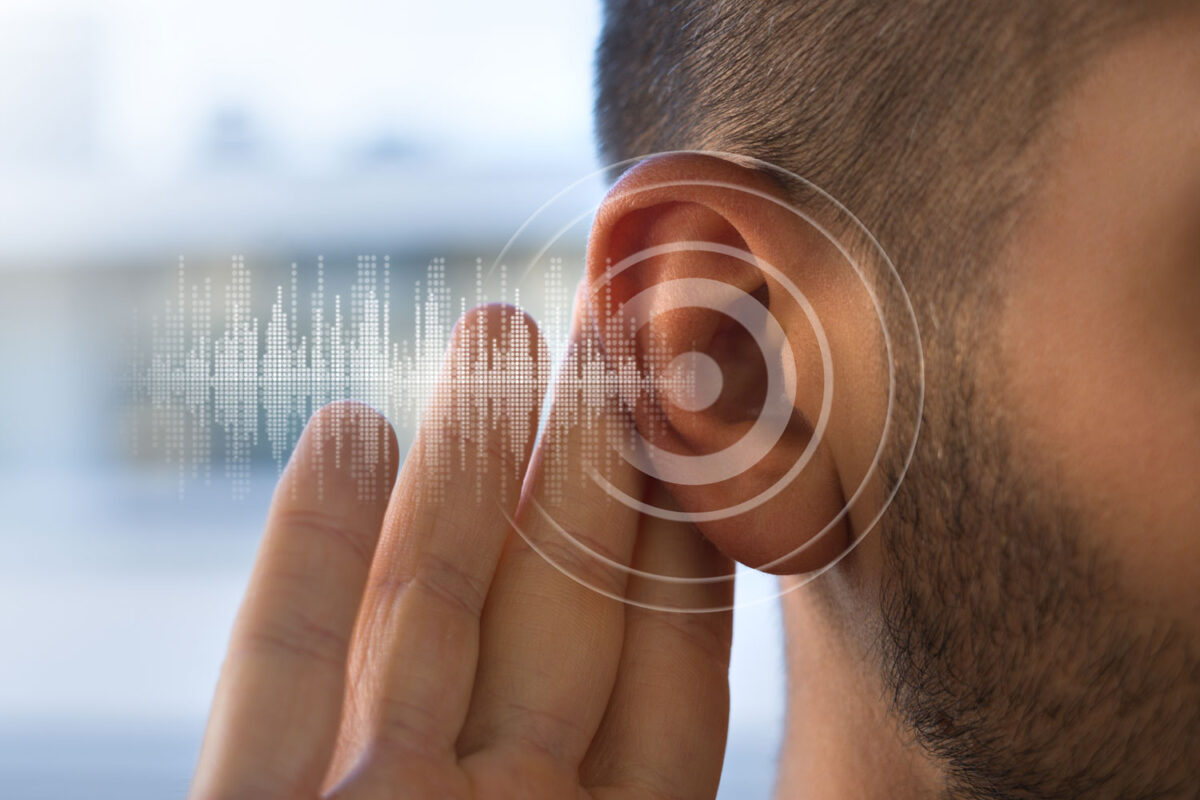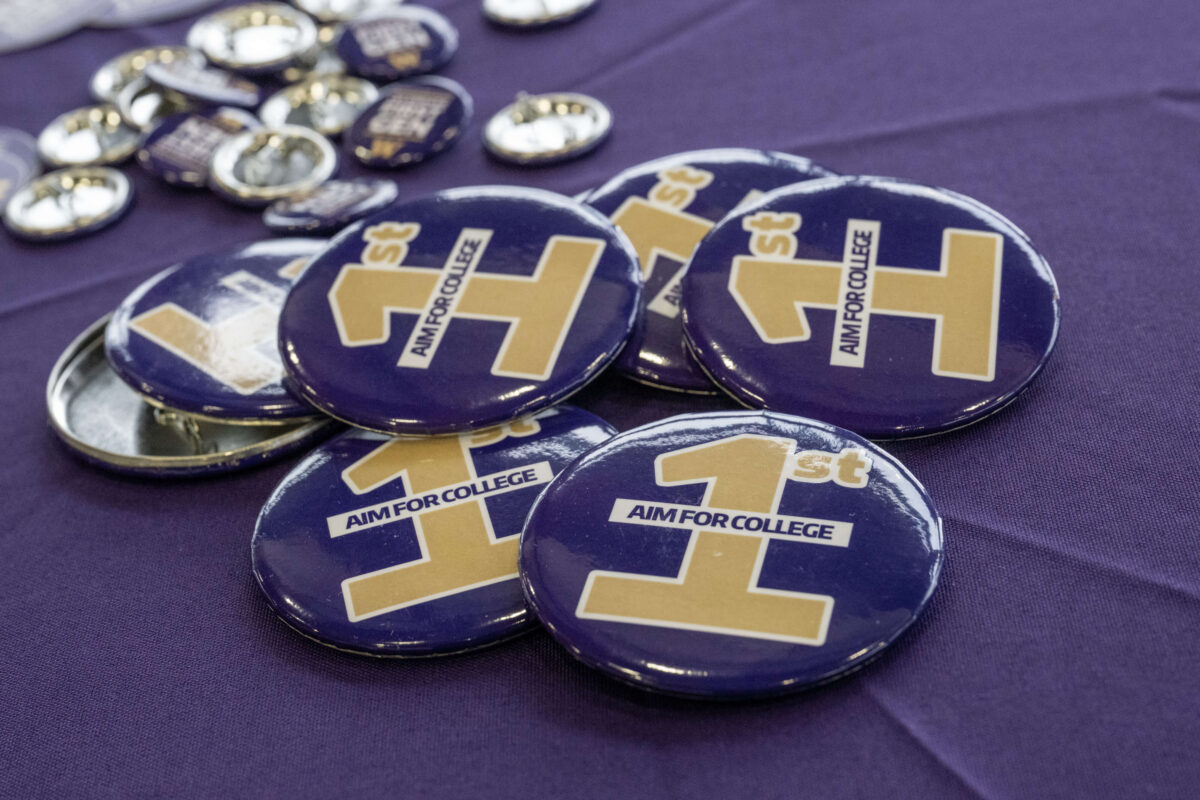On October 10, 2025, just under two kilometers of fiber optic cable were laid offshore the San Juan islands in a trial that could demonstrate the global potential that thousands of miles of existing fiber optic cable offers for monitoring endangered marine species.
Researchers from the University of Washington Bothell’s School of STEM and the UW’s School of Oceanography, with funding from Allen Family Philanthropies (formerly known as the Paul G. Allen Family Foundation), launched this innovative research project — which has the potential to revolutionize marine conservation with a new way to monitor marine mammals on a large scale, using an existing global network of previously dormant telecommunications cables.
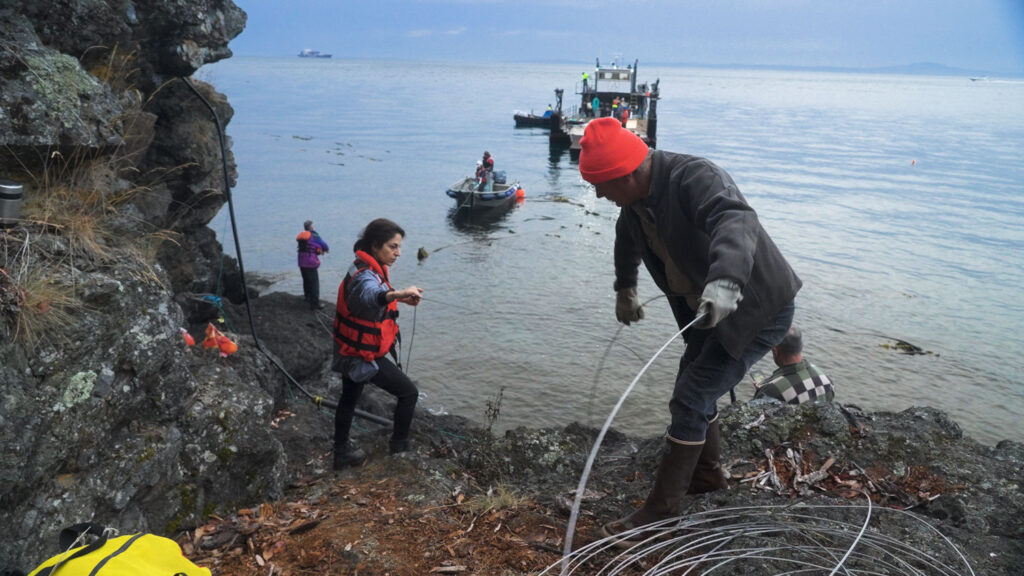
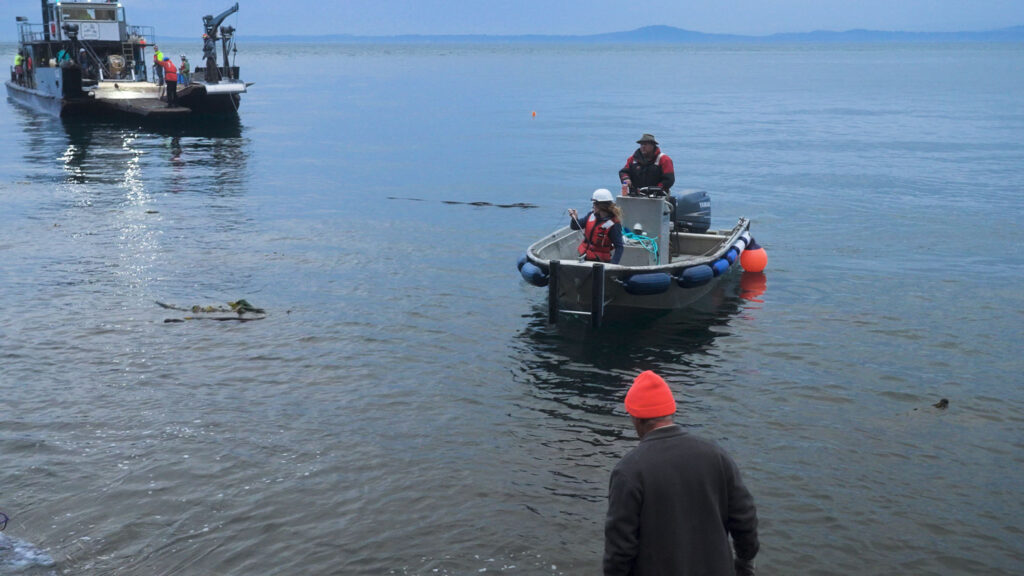
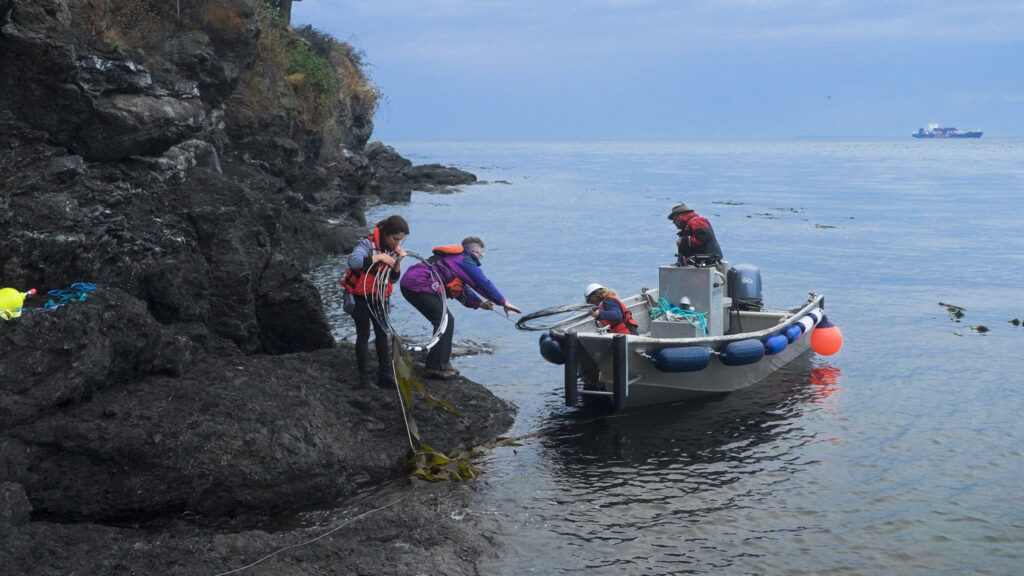
Repurposing fiber optic cables
The project offers a groundbreaking approach using novel technology called Distributed Acoustic Sensing that provides detailed, real-time monitoring of vast ocean areas. This technology has the potential to make a global impact by enabling the thousands of kilometers of underwater cabling currently deployed across the world. This is especially compelling for research into endangered species that are difficult to track, such as Southern Resident orcas.
Where past research has relied on hydrophones, which detect sounds at a singular point, DAS transforms fiber optic cables into receiver arrays that pick up sounds along the full length of the cable. The fiber optic cables connect to an instrument known as an interrogator, which sends laser pulses through the cable and measures when it is affected by vibrations or acoustic energy. This allows researchers to pinpoint and analyze the precise location and nature of the disturbance.
DAS has previously been used to detect seismic activity, but in the last several years, it’s been proven successful at detecting marine mammals.
This new research project is led by Dr. Shima Abadi, an oceanographer and professor at UW Bothell’s School of STEM with a joint appointment at UW’s School of Oceanography. To test this technology’s capabilities, Abadi and her research team used tens of kilometers of pre-existing fiber optic cables near Whidbey Island and Seattle to monitor Southern Resident orcas over a two-year period.
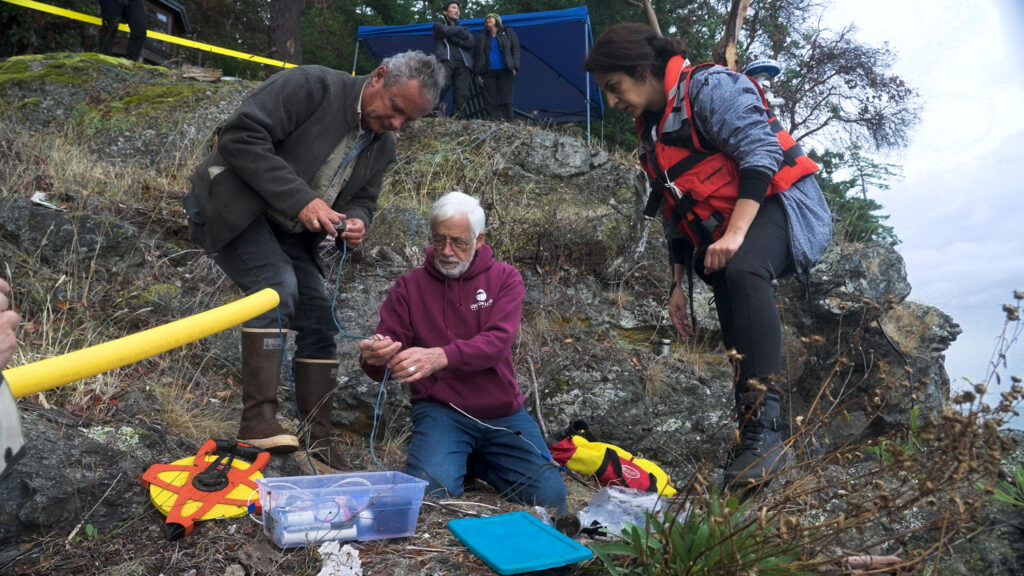
Revolutionizing marine conservation
Increasing water temperatures and food scarcity are concerns for Southern Resident orcas and may disrupt traditional migration patterns. Additionally, this research could help mitigate another common threat to orcas: maritime traffic.
“We hope to show that fiber optic cables can detect Southern Resident orca vocalizations, enabling us to triangulate the orcas’ locations and better track them — allowing earlier warnings to vessels to reduce speed or avoid the area,” Abadi said. “This innovative approach could be a breakthrough in conservation efforts and open new possibilities to expand analysis on a much larger temporal and spatial scale.”
Because orcas spend nearly all their time under the water surface, it is challenging for researchers to get a full picture of their movements through only visual observation. In an environment such as the Puget Sound, underwater visibility is quite limited as well, making sound the primary tool for observing marine animals’ migratory patterns.
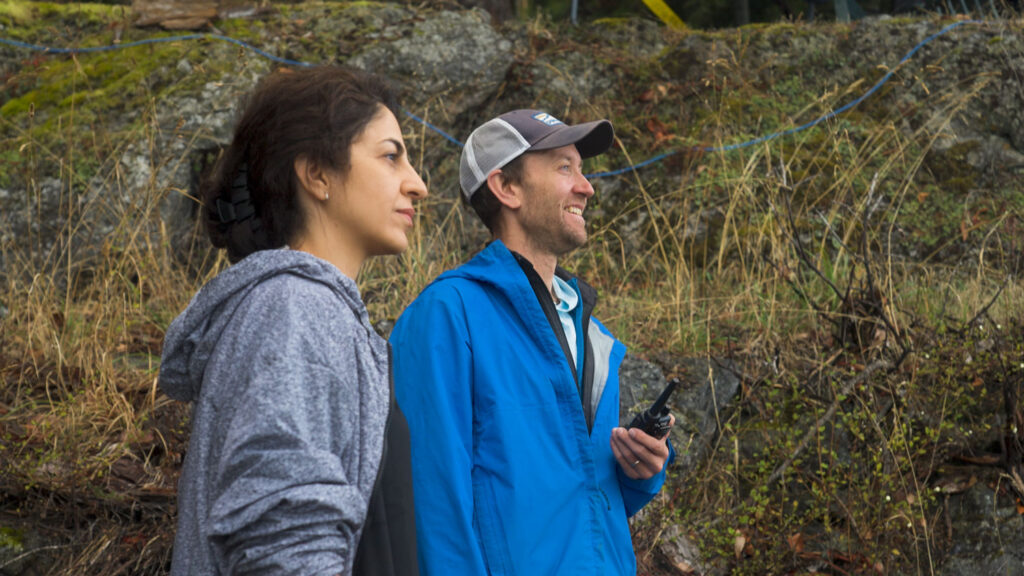
Creating a network of sound
The project is supported by a $1.5 million grant from Allen Family Philanthropies as part of its continuing portfolio that invests in researchers focused on conservation and monitoring endangered species.
In this case, collecting high-resolution acoustic data can lead to a deeper understanding of animal behaviors, communication patterns and responses to a changing environment.
“Our hope is that this Distributed Acoustic Sensing trial will lead to the creation of a global monitoring network that protects endangered species like the Southern Resident orca,” said Yuta Masuda, Ph.D., director of science for Allen Family Philanthropies. “This research could drastically increase our understanding of marine mammals and complement other technologies being deployed for monitoring human impacts on marine life.”
Over the next two years, Abadi and a team of four co-researchers will track data and work with local nonprofit organizations such as Beam Reach, which will support the project by providing comparative data from its hydrophone network, in order to understand when and where orcas are traveling near the hydrophones and fiber optic cables.
Researchers hope DAS data can provide new insights into how orcas are affected by factors such as climate change and maritime traffic — and can help shape state and regional initiatives to mitigate impacts on wildlife.
“This research could drastically increase our understanding of marine mammals and complement other technologies being deployed for monitoring human impacts on marine life.”
Yuta Masuda, Ph.D., director of science, Allen Family Philanthropies
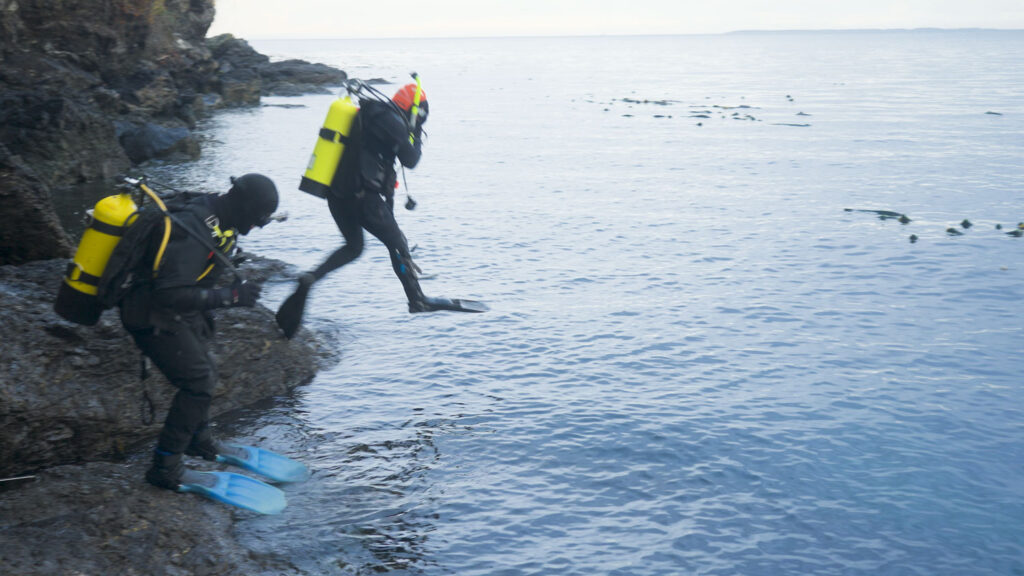
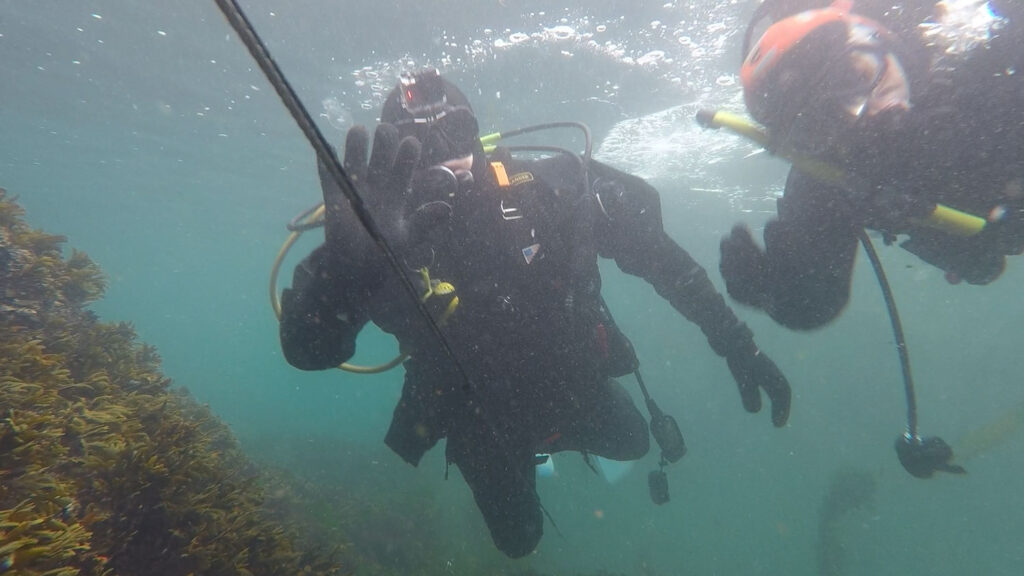
The co-primary investigators in the project — assisted by UW graduate students Isabelle Brandicourt and Samantha Juber — include Dr. William Wilcock (UW School of Oceanography), Dr. Brad Lipovsky and Dr. Marine Denolle, (UW Department of Earth and Space Sciences) and Dr. Scott Veirs (M.A. ’97 and Ph.D. ’03, both in Oceanography from the UW) from Beam Reach. As the project expands, opportunities will open for undergraduate students to participate in data analysis and in-the-field experiments.
Learn about the distributed acoustic sensing interaction and listen to sounds in the Salish Sea on the project’s webpage: http://www.uwb.edu/revolutionizing-marine-conservation/. Watch a video featuring highlights from the exciting launch: https://youtu.be/NYBE8VStAKU.
